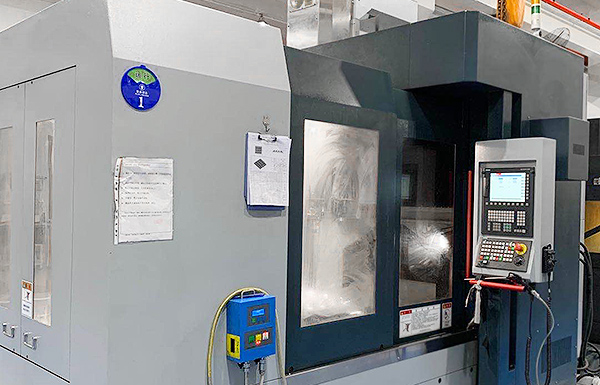- Guide column damage
The guide pillar plays a guiding role in the mold, which is to keep the molding surface of the core and cavity from touching each other and cannot be used as a force or positioning part.
Plastic molding parts manufacture introduces the following two cases. The dynamic and fixed molds will produce a substantial lateral offset force during the injection.
When the wall thickness of the plastic parts is not uniform, the material flow through the thick wall at a significant rate, resulting in immense pressure here; the side of the plastic parts is not symmetrical, such as the step-shaped parting surface of the mold, the opposing sides of the surface of the counter pressure is not equal.
- Difficulties in the sprue release
Plastic injection molding supplier in the injection process, the gate stuck in the gate sleeve, not easy to get out. When the mold is opened, the product is cracked and damaged. In addition, the operator must use the tip of the copper rod to knock it out from the nozzle to make it loose before demoulding, which seriously affects production efficiency.
The main reason for this failure is the poor finish of the conical hole of the gate and the knife marks in the circumferential direction of the inner hole. Secondly, the material is too soft, the small end of the cone hole is deformed or damaged after using for a period of time, and the nozzle spherical curvature is too small, resulting in the riveting head of the sprue material here. The tapered hole of the sprue is difficult to process, so standard parts should be used as much as possible. If you need to process it by yourself, you should also make your own or buy a special reamer. The tapered hole should be ground to Ra0.4 or less. In addition, a sprue puller or sprue ejector must be set.
- Moving and fixed mold offset
In large molds, due to the different charging rates in each direction and the influence of the mold’s self-weight when loading the mold, moving and fixed mold deflections occur. In these cases, the lateral offset force will be added to the guide column during injection, and the surface of the guide column will be stretched and damaged when the mold is opened, and in serious cases, the guide column will be bent or cut off, and even the mold cannot be opened.
In order to solve the above problems, in the mold parting surface, add a high-strength positioning key on each of the four sides, with a simple and effective use of cylindrical keys. The perpendicularity of the guide pillar hole and the parting surface is crucial.
In the processing is the use of dynamic, fixed die alignment after clamping in the boring machine once boring so as to ensure the concentricity of the dynamic, fixed die hole and make the verticality error small. In addition, the heat treatment hardness of the guide pillar and guide bush must meet the design requirements.

- Bending of moving mold plate
Mold in the injection. The mold cavity molten plastic generated a huge back pressure, generally in the 600 ~ 1000 kg / cm2. Mold makers sometimes do not pay attention to this problem and often change the original design size or the dynamic template with low-strength steel plate instead in the top bar top material in the mold due to the large span between the two sides of the seat, resulting in injection when the template down bending.
Therefore, the moving template must use high-quality steel to have enough thickness, do not use A3, and another low-strength steel plate, when necessary, should be set up below the moving template support column or support block in order to reduce the thickness of the template, improve the bearing capacity.
- Top bar bending, fracture, or leakage
The quality of the homemade top bar is better. That is, the processing cost is too high. Now usually choose standard parts. The quality is general. If the gap between the top bar and the hole is too large, there is leakage, but if the gap is too small, the top bar will be stuck due to the expansion of the top bar during the injection due to the increase in mold temperature. What’s more dangerous is that sometimes the top bar is not able to be ejected for a general distance and breaks; as a result, the exposed top bar can’t be reset during the next mold closing and crashes the concave mold.
In order to solve this problem, the top bar is resharpened by keeping a 10~15mm mating section at the front end of the top bar and grinding the middle part smaller by 0.2mm. All the top bars in the assembly must be strictly checked from the fit clearance, generally within 0.05 ~ 0.08 mm, to ensure that the entire ejector mechanism can enter and exit freely.
- Poor cooling or water leakage
The cooling effect of the mold directly affects the quality of the products and production efficiencies, such as poor cooling, the products shrinking large, or shrinkage is not uniform and warped surface deformation and other defects. On the other hand, the mold as a whole or locally overheating so that the mold can not be formed normally and stop production, and in serious cases, the top bar and other moving parts of thermal expansion are jammed and damaged.
The design of the cooling system, processing to product shape, does not because of the complex structure of the mold or processing difficulties and omit this system, especially large and medium-sized mold must be fully considered cooling problems.
- Guide slot length is too small
Some molds due to the limitations of the template area, the length of the guide slot is too small, the slider in the core action is completed to reveal the outside of the guide slot so that in the core after the stage and the initial stage of the mold reset are easy to cause the slider tilt, especially in the mold, the slider reset is not smooth so that the slider damage and even press bending damage.
According to the experience, the length of the slide should not be less than 2/3 of the full length of the guide slot after the slider has completed the core extraction action.
- Fixed distance tensioning mechanism failure
A pendulum hook, buckle, and other fixed distance tensioning mechanism is generally used in the fixed mold core extraction or some secondary demoulding of the mold. Because this kind of mechanism is set in pairs on both sides of the mold, its action must be synchronized, that is, close the mold at the same time, buckle, and open the mold to a certain position at the same time off the hook.
Once lost synchronization, it will inevitably cause the template of the pulled mold to be skewed and damaged, the parts of these institutions to have high rigidity and wear resistance, adjustment is also very difficult, and the institutional life is short, try to avoid using, can be replaced by other institutions. In the case, a relatively small pumping force can be used to push out the spring method of fixed die, and in the case, a relatively large pumping force can be used to move the die back when the core is sliding. First, complete the pumping action and then the structure of the mold, in large molds can be used hydraulic cylinder pumping core.
- Slant pin slider type core extraction mechanism damage.
Most of the more common faults of this mechanism are not in place during the processing, and the material is too small. There are two main problems: tilt pin angle A large; the advantage is that it can produce a relatively large core distance in the shorter mold opening stroke. But take too large inclination angle A, when the extraction force F is a certain value, the bending force P=F/COSA in the process of core extraction, also the greater the bending force P=F/COSA, easy appears bevel pin deformation and bevel hole wear. At the same time, the slanted pin on the slider upward thrust force N = FTGA is also greater. This force makes the slider on the guide groove guide surface pressure increase, thus increasing the friction resistance of the slider when sliding. Easy to cause sliding is not smooth, guide groove wear. According to experience, the inclination angle A should not be greater than 25 °.
